| Who’s Coming Up Next Monday?
EKK: Backstage in the Minds of the Composers
Monday, January 26, was a unique opportunity for the EKK audience. Whenever an audience views a show, the magic of the stage action is what the viewer takes away. Rarely does one get to see behind the scenes into the creative thought processes of the artists, in this case, the composers and the musicians.
Kellen and Lihau Hannahs Paik, better known as Kupaoa, was joined by their friend, mentor, and instructor of Hawaiian Language, the illustrious Dr. Puakea Nogelmeier with his deep and resonant voice. Together they peeled away the layers of the onion as they revealed the stories or mo’olelo of the songs that they had collaborated on, revealing the deeper metaphorical meanings and the secrets hidden in the words of the song. Bringing the music and lyrics to us visually was the hula of Frank Akima and Eleena Helenihi of the Kananiokeakua School of Hula. There was definitely a magical ambiance as they shared their stories, music and dance. Puakea describes: “ . . .it makes the room vibrate with happy, engaged hearts and minds.”
EKK Audience Da Best!
As Lihau shared in her email:
“We had such a wonderful time last night with our gang. I can’t tell you how much Kellen and I truly enjoy playing at EKK. We can’t express our appreciation for all that you do and sacrifice to keep an event like this going. It’s truly one of a kind and we are so grateful to be given the opportunity to play for the community of Kaua`i in an EKK-type setting. In Hawai`i, it’s rare that we get the chance to share so much of the mana`o behind all of our mele. As I said in the show, we are usually the background to some joyous celebration or the ambiance for an evening meal. EKK has provided us with the opportunity to do the kind of show that we normally do on tour in the mainland for a local audience. We got so many encouraging and kind comments last night about the performance and most were so appreciative to hear the mo`olelo so mahalo for giving us the opportunity to share that! “
Sharing Through Workshops:
The sharing started at 6:00 pm with Kellen and Lihau teaching the ‘ukulele gang, 40 strong, the strumming and words to Bumbye while the two kumu hula worked with 20 aspiring dancers, to learn the hula for Bumbye. We set up seven chairs in a tight semi-circle for a Hui Kuka Kuka (discussion group) for Hawaiian language aficionados to have a chance to hear Puakea, but the Kaua’i coconut wireless worked overtime and Puakea’s fan club showed up so the tight circle expanded to over 25 people hanging on to his every word. It’s the same voice that tells everyone on TheBus in Honolulu when they are approaching their destination bus stop.
Puakea loved the sharing as he wrote:
“I had a great time with the “language” group – we talked more about language than talking the language, but it was very worthwhile. Then the evening went along like a night in my living room, just with a few hundred extra folk on hand. As comfortable and fun as a gathering of friends. Thank you for including me, and for making another wonderful memory in my own Lei Hali`a.”
Dennis Kamakahi Dedication:
Lihau and Kellen opened the performance with one of their favorite Dennis Kamakahi songs as a fitting way to honor the memory of Uncle Dennis. They shared the story of Sweet By and By which Dennis wrote for a friend who wanted to woo his girlfriend. On a dark night they did the grand romantic gesture by standing outside the love interest’s home and serenaded her with the words of a love-struck suitor. The lights came on, the window opened, and the girl’s dad stuck his head out and said, “You guys! It’s beautiful but her room is on the other side!” Dennis told them that it worked because they are still married and Sweet By and By is their anniversary song.
As always, Kuapao’s family “banter,” which is a big part of their performance, together with the harmonic blend of their voices, held us captive. Kellen sings so joyfully with his uplifting smile on a cherubic Buddha-like face while Lihau’s serene expression and mellow voice reflects the emotion of each song.
“Predictive Magic”
Kupaoa’s favorite of Keali’i Reichel’s song composed by Puakea is the title track on his award-winning second CD Lei Hali’a. Puakea’s mana’o behind the song is that we all wear a lei of remembrance and whenever something is sad or gloomy, there is always an upside to balance it – like when his neighbor cut down his favorite 5-story Tamarind tree making his whole day gloomy, he was able to see the beautiful Ko’olau mountains that were earlier blocked by the tree. In the song Lei Hali’a, when the winds change, the clouds back up in Nuuanu Valley making the valley feel gloomy but the forest is very happy with the humidity. He shared a secret in the last line – that when the winds shift and sweep up against the strong tall peak and lifts the gloomy mist, the majestic pali cliffs shine through and the intoxicating Hinano scent from the Ko’olau side of the valley rise up to the mountain peaks. It’s called “predictive magic.” Such titillating kauna.
Awaiaulu – Paying it Forward:
Another Keali’i Reichel-related story was about one of the first original compositions by Puakea. Although Kupaoa had sung it at various events, they never recorded the song, so when Keali’i sang it at an event he put a kapu on it and Puakea promised him the song. Because Keali’i never recorded it, they negotiated with him and finally in 2014 recorded the song on their I Know You By Heart CD.
The song He Aloha Awaiaulu, is about the home of his very close friend, Dwayne Nakila Steele, who was first his student, then his friend, and then his partner-in-crime and major funder for the much lauded Hawaiian language newspaper translation project which took them 20 years to transcribe. Dwayne’s words of wisdom to Puakea was that the “newspapers project” is not only about the Hawaiian language but about the knowledge that need to be made accessible. He entrusted Puakea to train the much-needed translators through what is called the “Awaiaulu Foundation” so the translation could be continued and accomplished. Puakea wrote the song as a Christmas present during the last year of Dwayne’s life. The word Awaiaulu is the name of their home and translate to “when two things are bound together as one.”
Lihau shared their story about their long-time family friends, the Steele’s. Marti and Puakea ganged up against Lihau’s adamant mandate that Kellen finish his Masters degree before recording in the studio. They both felt that Kupaoa needed to get their music out there, and believing in them, Marti funded their first CD project. Lihau agreed on the condition that they be able to pay her back for her financial support. It took them two years to save the money from the sale of the CD’s but when she tried to write her a check to return the favor, Marti told her to “pay it forward!” Such is the kind of friendship that is captured in the message of the song — as the highlands are garlanded by the mist, so are we wearing the garland of aloha.
Talking about “paying it forward”, the Na Mele Hawaiian Songbook (a must for any ‘ukulele player) for which Puakea is one of the volunteer collaborators along with Carol Wilcox, Kimo Hussey and Vicky Hollinger, is now in its 9th printing and has raised over a quarter million dollars for the Lunalilo Homes.
Ka Wai Wai, another song with plenty of words about the riches in our lives was written by Puakea for the Hawaiian language students in Kahuku. Whether he is aware of it or not, it seems to embody his own life’s journey. Posed as a question to the students, he asked them if they wanted to be Rich or Smart? and “How many of you will give away half of what you have to others?” His answer to the rhetorical question was that the Rich will not give away half of what they have to others, but that the Smart can and will give away half or all of what they have to others because what they have is knowledge. Just ask them and they will give.
Back to My Roots:
Kaulana Kilauea (famous is Kilauea) on their Bumbye CD was composed by Kellen to honor his beloved home town – the Kilauea plantation with its history of hardships which brought all these wonderful people of different ethnicities together into one close-knit community, the people of Kilauea who all helped to raise the kids together, the Lighthouse that guides the ships represents the guiding of the children, the school where he grew up as a child, and together they all comprised the garland that he will wear forever. Frank Akima danced the hula to Kaulana Kilauea.
Halalea encompasses the land from Kalihiwai to Ke’e at the end of Ha’ena. Kellen, as part of his Master’s degree, had to re-write a four page story into a 20 page story in Hawaiian. He took the late Bruce Wichman’s story in Kauai Tales about Manini Holo, the menehune who lived in the Dry Cave in Haena, and tried to expand the story but ended with only 15 pages of text. Lihau, who claims she should have an honorary Masters Degree in Hawaiian language for her part in helping Kellen to earn his degree, composed the 2-page hakumeleHalalea to be interspersed into the text of Kellen’s story because incorporating songs into the stories was commonly seen in Hawaiian writing. For this number, Kellen sang and Lihau danced the hula.
See You Bumbye:
Bumbye is a song composed by Puakea for his foster mother ‘Ululani, a 4 -foot 11-inches tall Hawaiian Goddess who was married to a handsome 6-foot 4-inches tall Hawaiian man named Kamuela Kumukahi. Kamuela spoke only Hawaiian until age 8 and married ‘Ululani at age 17; he was a lover of the language and shared his love of the Hawaiian words with Puakea. ‘Ululani had a heart attack in her old age and ended up hospitalized, but being a nurse all her life, she was not the ideal patient. She did accept native Hawaiian healing for thrush which involved gathering 50 kukui nuts off the tops of trees and taking the one drop of liquid or pilali from each nut and swabbing the affected areas in her mouth, but she refused to drink any water, saying she could not swallow and that she would drink water bumbye (laters).
Fearing for her life, Puakea went home heavy-hearted and came back the next morning with the song Bumbye which he sang for her in the morning. Laughing over the lyrics which called her the Queen of Bumbye, she reached for water and took a sip. She was released the next day. When she died later that year, they passed out the words to everyone at the funeral, saying this was not meant to be a sad song. Kupaoa recorded the song with ‘Ululani’s daughter, Ku’uipo Kumukahi, singing the 3rd verse which makes fun of her Mom – “your pretty little head is like basalt.” ‘Ukulele players joined in the playing, hula dancers brave enough to face the crowd went up to dance led by Frank and Eleena, while Kupaoa and Puakea sang the tongue-twister song.
Amphibians Elevated in Song:
Lihau pointed out that they seem to like Puakea’s songs with the most complicated words, one of them being The Toad Song which Puakea penned in a matter of minutes. But the “research” for it involved years of close observation on toad behavior at his home in Wai’anae. Moving to urban Honolulu, he did not encounter any toads until one rainy night when he heard the Toad’s croaking in the puddle where the giant Tamarind tree once grew. Next morning there were eggs in the pond. The moral of the story is that if a toad sings its own song, no matter how ugly he is, he will always find a mate.
Although the Hawaiian version took a few minutes to write, the English version, which is a hilarious rhyming tongue-twister, took him over five hours to complete. Keali’i Reichel, when he heard it, said it definitely was his style of song; and Puakea got his recording debut to sing two very, very low notes in the chorus because only his voice could go that low. Chinky Mahoe and his halau danced it at the Merrie Monarch Hula Festival and won first place for the incredible choreography. When Puakea’s mother was lying in bed with cancer, she had all her visitors watch the video of The Toad Song hula and she happily watched it ten times a day. In the years since The Toad Song came out, Puakea has been gifted with over 400 toad/frog sculptures and figurines, including that tall well-known sculpture of two butt-naked frogs hugging. This summer I was sitting in a dress shop at an outdoor food market in Taiwan when I heard Puakea’s sonorous voice croaking through the racks of designer dresses….what a ribbeting surprise! Hard to believe that the homely humble toad has made its way around the world . . . in song.
Mele Koki about the invading Koki frogs on the Big Island is another of Puakea’s concoctions which is actually criticizing a system that allows pests from Puerto Rico to invade and take over the fragile eco-system in Hawaii. One frog sounds like a high zippy whistle but a thousand-million Koki frogs sounds like an unrelenting car alarm that never quits. “They sing till dawn but madness may come first!” The delightful surprise of the evening was Frank’s super athletic signature hula of this four-legged tongue-zapping hopper. Dressed in the perfect black-green-white athletic attire, he danced and pranced like a frog with attitude . . . no wonder the kids love it! In fact, everyone at EKK loved it, too.
Songs of Love and Hope:
One of the most beautiful songs was Na Pua Mohala or Hana Wa Saku (the flowers will bloom) which was composed as a song of hope for the survivors of the 2011 Tohoku Earthquake and Tsunami that the vast farmlands devastated by the oceans would bloom once again. Together with their musical counterparts in Japan, a group called Kaulana, Kupaoa recorded a CD with this as the title track. Kellen revealed how difficult it was for them to take the Japanese message and translate it literally into Hawaiian; it just did not feel or sound right. So they took their attempts to Puakea who helped them to translate the ideas or sentiments rather than the words. The melody definitely has a Japanese sound to it and the lyrics in both Hawaiian and Japanese shares the message of hope that the flowers will continue to bloom. Eleena’s hula was as poignant and uplifting as the mele.
Lihau wrote a song about her beloved Chinese grandmother whose passing caused her much physical pain; Kellen urged her to work through her grief by writing about her in song. Interestingly, Popo did not like “that boy” because he was not Chinese, but he eventually won her over by bringing her fish that he speared. It took Lihau over five years before she could actually record the song,Pakalana A Ka Pu’uwai, Pakalana of My Heart. Eleena danced the hula to this song.
The final number is the title track from their I Know You By Heart CD; it shares the message to cherish the moments that you spend together. At EKK we definitely all take that message to heart!
Kamoa ‘Ukulele Winner:
None other than our faithful attendee and patron Noreen Chun of Kapa’a was the lucky winner of the Kamoa ‘Ukulele this week!
PS – The Newspaper Project:
After I got home and unloaded my van, it was already 11:00 pm, but I was so curious about the “newspaper project” which I had vaguely known about since it started a quarter century ago, so I went online and read about it until 2:00 in the morning. I was struck by the value of recording what goes on today as valuable touchstones for the future.
Here are some links for those who wish to lose sleep over it. Fascinating! www.awaiaulu.org; www.youtube.com/watch?v=qx44JMlkxyk;www.the.honoluluadvertiser.com/article/2006/Apr/21/bz/FP604210344.html; www.hawaiicommunityfoundation.org/client-services/donor-stories-dwayne-nakila-steele;
What a compliment to receive this email from Puakea drawing a parallel between his work on the newspaper project to my work with EKK:
My work is a bit like yours – we do it knowing that it makes a ripple far beyond ourselves. You work nonstop to make learning fun, and it elevates both the content of what’s learned as well as those who develop whole new fields of appreciation. Your continual pebbles-in-the-pond have far-reaching ripples – and they often wash over me – I came back from EKK feeling fully uplifted, and it was a two-way thing – I have new things to appreciate. Mahalo ia `oe.
me ke aloha,
Puakea
If you have a disability and need assistance please email Carol Yotsuda at giac05@icloud.com for Mondayevents.
(s) Carol Kouchi Yotsuda, www.gardenislandarts.org — “Celebrating 38 years of bringing ARTS to the people and people to the ARTS”
E Kanikapila Kakou 2015 Hawaiian Music Program is funded in part by the Hawai’i Tourism Authority, the County of Kaua’i Office of Economic Development, and the Garden Island Arts Council supporters with support from the Kaua’i Beach Resort.
Garden Island Arts Council programs are supported in part by the State Foundation on Culture and the Arts through appropriations from the Hawai’i State Legislature and the National Endowment for the Arts.
How to find EKK: Look for this banner along Kuhio Highway as you leave Hanamaulu heading north. |

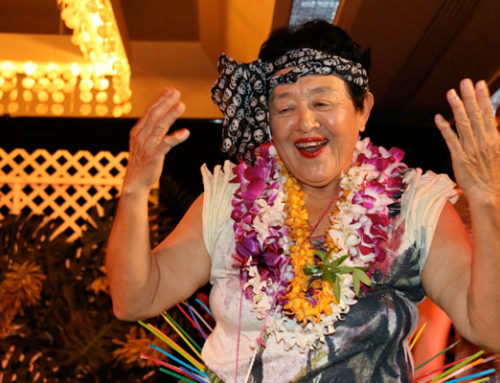
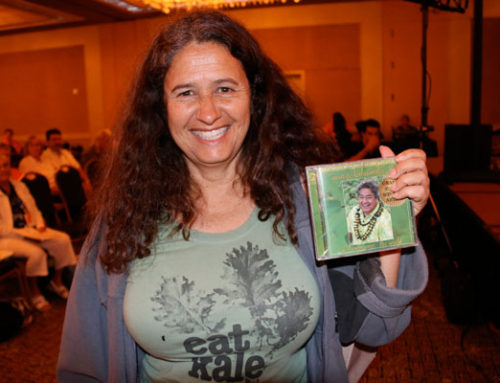
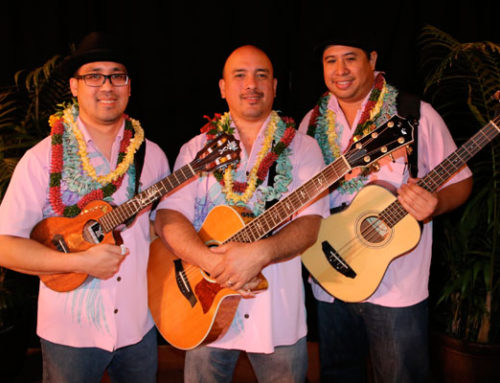
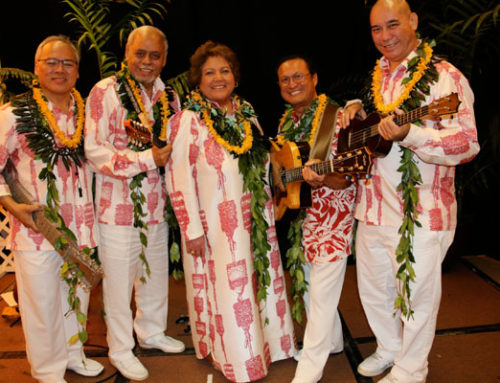
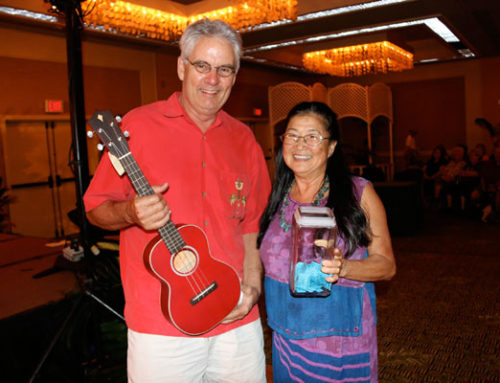
Leave a Reply